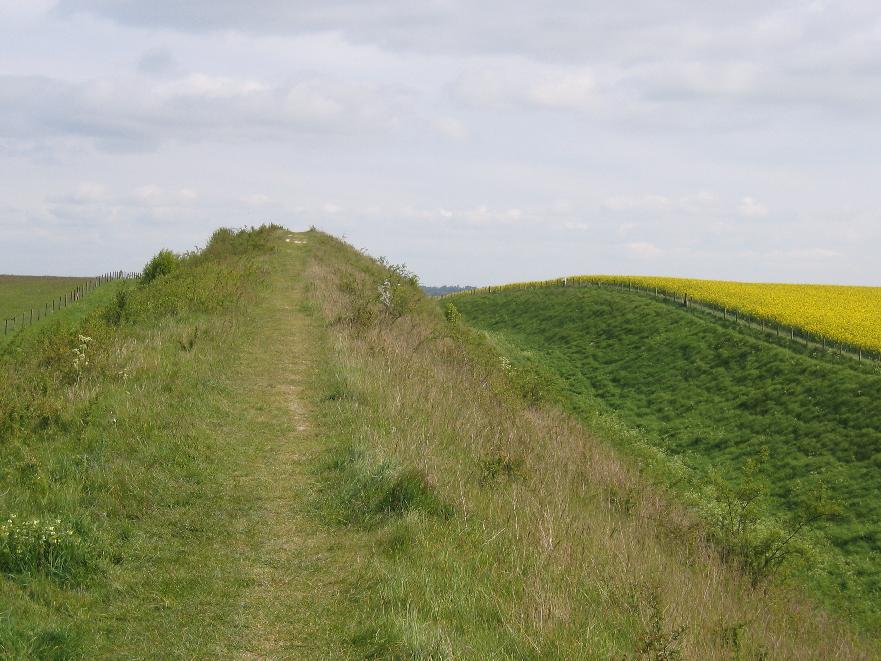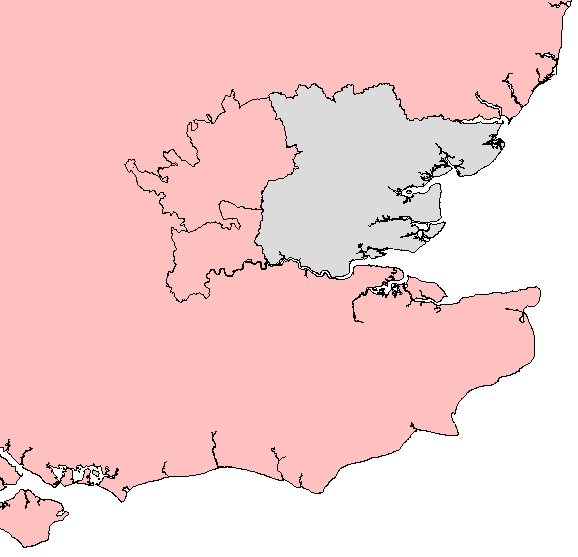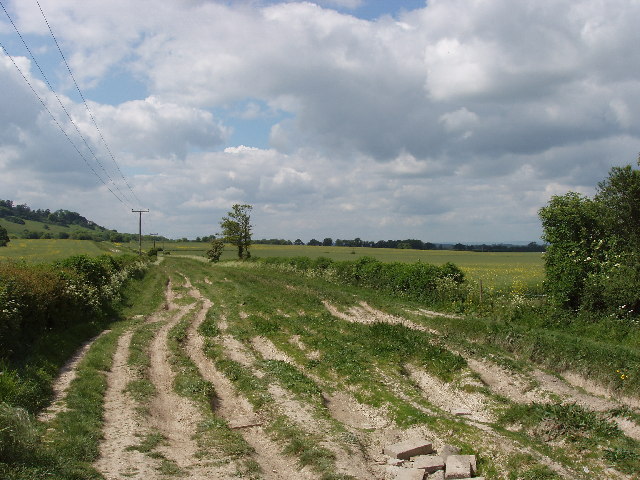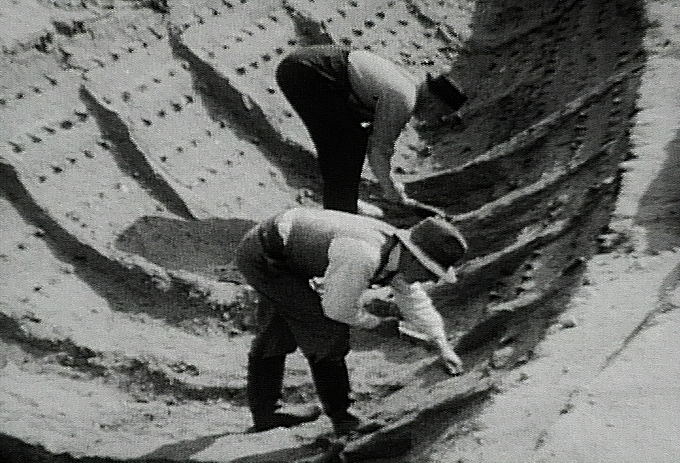|
Wehha Of East Anglia
Wehha is listed by Anglo-Saxon records as a king of the East Angles. If he existed, Wehha ruled the East Angles as a pagan king during the 6th century, at the time the region was being established as a kingdom by migrants arriving from what is now Frisia and the southern Jutland peninsula. Early sources identify him as a member of the Wuffingas dynasty, which was established around the east coast of Suffolk. Nothing of his reign is known. According to the East Anglian tally from the ''Textus Roffensis'', Wehha was the son of Wilhelm. The 9th century ''History of the Britons'' lists Wehha, named as 'Guillem Guercha', as the first king of the East Angles, as well as his son and heir Wuffa, after whom the dynasty was named. It has been claimed that the name ''Wehha'' is a hypocoristic version of '' Wihstān'', from the Anglo-Saxon poem ''Beowulf''. This claim, along with evidence from finds discovered at Sutton Hoo in 1939, suggests a connection between the Wuffingas and a Swedis ... [...More Info...] [...Related Items...] OR: [Wikipedia] [Google] [Baidu] |
King Of The East Angles
The kingdom of East Anglia (also known as the kingdom of the East Angles), was a small independent Anglo-Saxon kingdom that comprised what are now the English counties of Norfolk and Suffolk and perhaps the eastern part of the Fens. The kingdom was one of the seven traditional members of the Anglo-Saxon Heptarchy. The East Angles were initially ruled (from the 6th century until 749) by members of the Wuffingas dynasty, named after Wuffa, whose name means 'descendants of the wolf'. The last king was Guthrum II, who ruled in the 10th century. After 749 East Anglia was ruled by kings whose genealogy is not known, or by sub-kings who were under the control of the kings of Mercia. East Anglia briefly recovered its independence after the death of Offa of Mercia in 796, but Mercian hegemony was soon restored by his successor, Coenwulf. Between 826 and 869, following an East Anglian revolt in which the Mercian king, Beornwulf, was killed, the East Angles again regained their independe ... [...More Info...] [...Related Items...] OR: [Wikipedia] [Google] [Baidu] |
Anglo-Saxons
The Anglo-Saxons were a Cultural identity, cultural group who inhabited England in the Early Middle Ages. They traced their origins to settlers who came to Britain from mainland Europe in the 5th century. However, the ethnogenesis of the Anglo-Saxons happened within Britain, and the identity was not merely imported. Anglo-Saxon identity arose from interaction between incoming groups from several Germanic peoples, Germanic tribes, both amongst themselves, and with Celtic Britons, indigenous Britons. Many of the natives, over time, adopted Anglo-Saxon culture and language and were assimilated. The Anglo-Saxons established the concept, and the Kingdom of England, Kingdom, of England, and though the modern English language owes somewhat less than 26% of its words to their language, this includes the vast majority of words used in everyday speech. Historically, the Anglo-Saxon period denotes the period in Britain between about 450 and 1066, after Anglo-Saxon settlement of Britain, th ... [...More Info...] [...Related Items...] OR: [Wikipedia] [Google] [Baidu] |
Devil's Dyke, Cambridgeshire
Devil's Dyke or Devil's Ditch is a linear earthen barrier, thought to be of Anglo-Saxon origin, in eastern Cambridgeshire and Suffolk. It runs for in an almost straight line from Reach to Woodditton, with a ditch and bank system facing southwestwards, blocking the open chalkland between the marshy fens to the north and the formerly wooded hills to the south. It is a Scheduled Monument, a biological Site of Special Scientific Interest and a Special Area of Conservation. Description The name ''Devil's Ditch'' or ''Dyke'' is a post-medieval one. In medieval times it was simply called the ''dic'' ("the ditch"), or ''le Micheldyche'' or ''magnum fossatum'' ("great ditch"). Devil's Dyke is over long and is the largest of a series of ancient dykes in Cambridgeshire. In some places the bank measures high and across. The highest point along the Devil's Dyke is at Gallows Hill, where it measures from the bottom of the ditch to the top of the earth wall. Since the 19th cent ... [...More Info...] [...Related Items...] OR: [Wikipedia] [Google] [Baidu] |
Middle Angles
The Middle Angles were an important ethnic or cultural group within the larger kingdom of Mercia in England in the Anglo-Saxon period. Origins and territory It is likely that Angles broke into the Midlands from East Anglia and the Wash early in the 6th century. Those who established their control first came to be called ''Middil Engli'' (Middle Angles). Their territory was centred in modern Leicestershire and East Staffordshire, but probably extended as far as the Cambridgeshire uplands and the Chilterns. This gave them a strategically important place within both Mercia and England as a whole, dominating both the great land routes of Watling Street and Fosse Way, and the major river route of the River Trent, together with its tributaries, the Tame and Soar. Mercia The Middle Angles were incorporated into the wider kingdom of Mercia, apparently well before the reign of Penda (c.626–655), who evidently felt safe enough to locate his base in their territory. He placed his eld ... [...More Info...] [...Related Items...] OR: [Wikipedia] [Google] [Baidu] |
Kingdom Of Essex
la, Regnum Orientalium Saxonum , conventional_long_name = Kingdom of the East Saxons , common_name = Essex , era = Heptarchy , status = , status_text = , government_type = Monarchy , event_start = , date_start = , year_start = 527 , event_end = , date_end = , year_end = 825 , event1 = , date_event1 = , event2 = , date_event2 = , event3 = , date_event3 = , event4 = , date_event4 = , p1 = Sub-Roman Britain , flag_p1 = Vexilloid of the Roman Empire.svg , border_p1 = no , s1 = Kingdom of England , flag_s1 = Flag of Wessex.svg , border_s1 = no , image_flag = , flag = , flag_type = , image_ ... [...More Info...] [...Related Items...] OR: [Wikipedia] [Google] [Baidu] |
Icknield Way
The Icknield Way is an ancient trackway in southern and eastern England that runs from Norfolk to Wiltshire. It follows the chalk escarpment that includes the Berkshire Downs and Chiltern Hills. Background It is generally said to be, within Great Britain, one of the oldest roads the route of which can still be traced, being one of the few long-distance trackways to have existed before the Romans occupied the country. However, this has been disputed, and the evidence for its being a prehistoric route has been questioned. The name is Celto-British in derivation, and may be named after the Iceni tribe. They may have established this route to permit trade with other parts of the country from their base in East Anglia. It has also been suggested that the road has older prehistoric origins. The name is also said to have been initially used for the part to the west and south (i.e. south of the River Thames) but now refers usually to the track or traces north of the Thames. From an ... [...More Info...] [...Related Items...] OR: [Wikipedia] [Google] [Baidu] |
The Fens
The Fens, also known as the , in eastern England are a naturally marshy region supporting a rich ecology and numerous species. Most of the fens were drained centuries ago, resulting in a flat, dry, low-lying agricultural region supported by a system of drainage channels and man-made rivers ( dykes and drains) and automated pumping stations. There have been unintended consequences to this reclamation, as the land level has continued to sink and the dykes have been built higher to protect it from flooding. Fen is the local term for an individual area of marshland or former marshland. It also designates the type of marsh typical of the area, which has neutral or alkaline water and relatively large quantities of dissolved minerals, but few other plant nutrients. The Fens are a National Character Area, based on their landscape, biodiversity, geodiversity and economic activity. The Fens lie inland of the Wash, and are an area of nearly in Lincolnshire, Cambridgeshire, and Norfol ... [...More Info...] [...Related Items...] OR: [Wikipedia] [Google] [Baidu] |
North Sea
The North Sea lies between Great Britain, Norway, Denmark, Germany, the Netherlands and Belgium. An epeiric sea on the European continental shelf, it connects to the Atlantic Ocean through the English Channel in the south and the Norwegian Sea in the north. It is more than long and wide, covering . It hosts key north European shipping lanes and is a major fishery. The coast is a popular destination for recreation and tourism in bordering countries, and a rich source of energy resources, including wind and wave power. The North Sea has featured prominently in geopolitical and military affairs, particularly in Northern Europe, from the Middle Ages to the modern era. It was also important globally through the power northern Europeans projected worldwide during much of the Middle Ages and into the modern era. The North Sea was the centre of the Vikings' rise. The Hanseatic League, the Dutch Republic, and the British each sought to gain command of the North Sea and access t ... [...More Info...] [...Related Items...] OR: [Wikipedia] [Google] [Baidu] |
Ship Burial
A ship burial or boat grave is a burial in which a ship or boat is used either as the tomb for the dead and the grave goods, or as a part of the grave goods itself. If the ship is very small, it is called a boat grave. This style of burial was practiced by various seafaring cultures in Asia and Europe. Notable ship burial practices include those by the Germanic peoples, particularly by Viking Age Norsemen, as well as the pre-colonial ship burials described in the Boxer Codex (c. 15th century) in the Philippines. Asia-Pacific East Asia China The extinct Bo people of China's Sichuan and Yunnan provinces are known for their hanging coffins. The ancestors of the Bo people were instrumental in helping the Western Zhou overthrow the ruling Yin at the end of the Shang dynasty. Apart from this, the Bo people differed from other ethnic minorities in China through their burial traditions. Instead of the more common burial on the ground, the coffins of the Bo people were found hanging ... [...More Info...] [...Related Items...] OR: [Wikipedia] [Google] [Baidu] |
Sutton Hoo Helmet
The Sutton Hoo helmet is a decorated Anglo-Saxon helmet found during a 1939 excavation of the Sutton Hoo ship-burial. It was buried around 625 and is widely associated with King Rædwald of East Anglia; its elaborate decoration may have given it a secondary function akin to a crown. The helmet was both a functional piece of armour that would have offered considerable protection if ever used in warfare, and a decorative, prestigious piece of extravagant metalwork. It is described as "the most iconic object" from "one of the most spectacular archaeological discoveries ever made", and perhaps the most important known Anglo-Saxon artefact. The visage contains eyebrows, a nose, and moustache, creating the image of a man joined by a dragon's head to become a soaring dragon with outstretched wings. It has become a symbol of the Early Middle Ages and "of Archaeology in general". It was excavated as hundreds of rusted fragments, and was first displayed following an initial reconstruc ... [...More Info...] [...Related Items...] OR: [Wikipedia] [Google] [Baidu] |
Sweden
Sweden, formally the Kingdom of Sweden,The United Nations Group of Experts on Geographical Names states that the country's formal name is the Kingdom of SwedenUNGEGN World Geographical Names, Sweden./ref> is a Nordic country located on the Scandinavian Peninsula in Northern Europe. It borders Norway to the west and north, Finland to the east, and is connected to Denmark in the southwest by a bridgetunnel across the Öresund. At , Sweden is the largest Nordic country, the third-largest country in the European Union, and the fifth-largest country in Europe. The capital and largest city is Stockholm. Sweden has a total population of 10.5 million, and a low population density of , with around 87% of Swedes residing in urban areas in the central and southern half of the country. Sweden has a nature dominated by forests and a large amount of lakes, including some of the largest in Europe. Many long rivers run from the Scandes range through the landscape, primarily ... [...More Info...] [...Related Items...] OR: [Wikipedia] [Google] [Baidu] |
Old English
Old English (, ), or Anglo-Saxon, is the earliest recorded form of the English language, spoken in England and southern and eastern Scotland in the early Middle Ages. It was brought to Great Britain by Anglo-Saxon settlement of Britain, Anglo-Saxon settlers in the mid-5th century, and the first Old English literature, Old English literary works date from the mid-7th century. After the Norman conquest of 1066, English was replaced, for a time, by Anglo-Norman language, Anglo-Norman (a langues d'oïl, relative of French) as the language of the upper classes. This is regarded as marking the end of the Old English era, since during this period the English language was heavily influenced by Anglo-Norman, developing into a phase known now as Middle English in England and Early Scots in Scotland. Old English developed from a set of Anglo-Frisian languages, Anglo-Frisian or Ingvaeonic dialects originally spoken by Germanic peoples, Germanic tribes traditionally known as the Angles, Sa ... [...More Info...] [...Related Items...] OR: [Wikipedia] [Google] [Baidu] |









